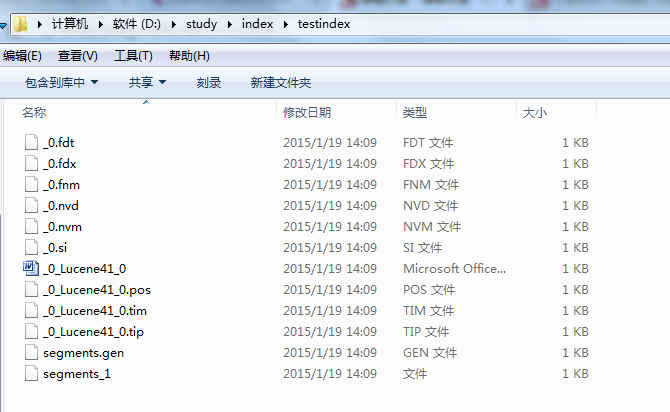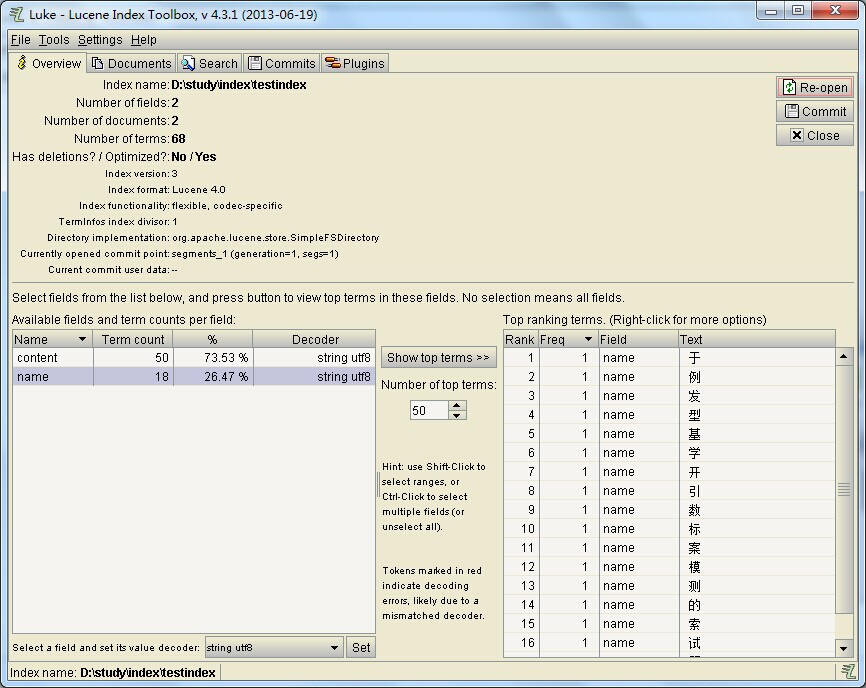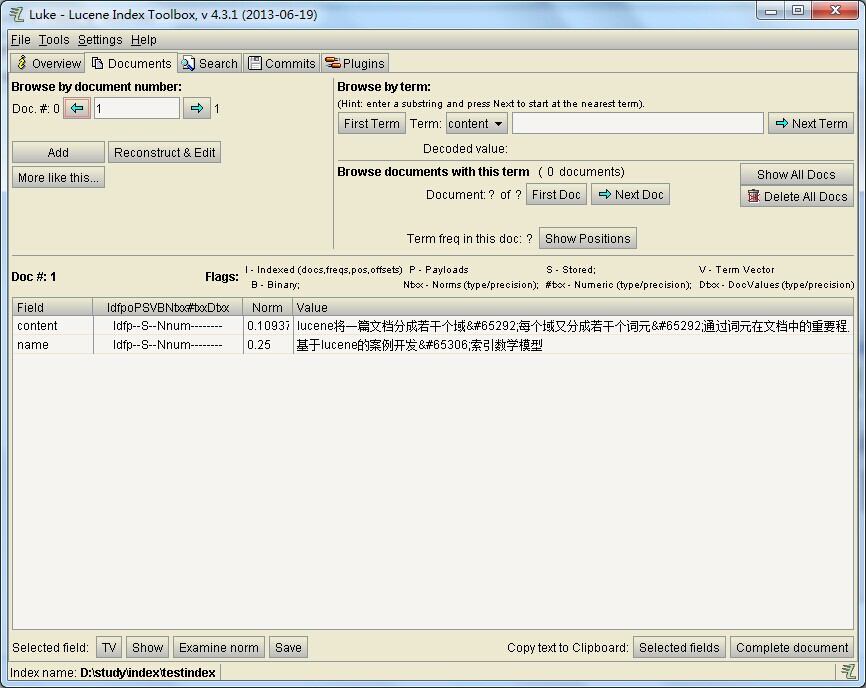转载请注明出处:http://blog.csdn.net/xiaojimanman/article/details/42872711
从这篇博客开始,不论是API介绍还是后面的案例开发,都是基于 lucene4.3.1 这个版本,Lucene4.3.1 下载请点击这里, Lucene其他版本下载请点击这里,Lucene4.3.1官方API文档请点击这里。
创建索引demo
在开始介绍之前,先看一个简单的索引创建demo程序:
/**
*@Description: 索引创建demo
*/
package com.lulei.lucene.study;
import java.io.File;
import org.apache.lucene.analysis.Analyzer;
import org.apache.lucene.analysis.standard.StandardAnalyzer;
import org.apache.lucene.document.Document;
import org.apache.lucene.document.Field.Store;
import org.apache.lucene.document.TextField;
import org.apache.lucene.index.IndexWriter;
import org.apache.lucene.index.IndexWriterConfig;
import org.apache.lucene.index.IndexWriterConfig.OpenMode;
import org.apache.lucene.store.Directory;
import org.apache.lucene.store.FSDirectory;
import org.apache.lucene.util.Version;
public class IndexCreate {
public static void main(String[] args) {
//指定索引分词技术,这里使用的是标准分词
Analyzer analyzer = new StandardAnalyzer(Version.LUCENE_43);
//indexwriter 配置信息
IndexWriterConfig indexWriterConfig = new IndexWriterConfig(Version.LUCENE_43, analyzer);
//索引的打开方式,没有索引文件就新建,有就打开
indexWriterConfig.setOpenMode(OpenMode.CREATE_OR_APPEND);
Directory directory = null;
IndexWriter indexWrite = null;
try {
//指定索引硬盘存储路径
directory = FSDirectory.open(new File("D://study/index/testindex"));
//如果索引处于锁定状态,则解锁
if (IndexWriter.isLocked(directory)){
IndexWriter.unlock(directory);
}
//指定所以操作对象indexWrite
indexWrite = new IndexWriter(directory, indexWriterConfig);
} catch (Exception e) {
e.printStackTrace();
}
//创建文档一
Document doc1 = new Document();
//对name域赋值“测试标题”,存储域值信息
doc1.add(new TextField("name", "测试标题", Store.YES));
//对content域赋值“测试标题”,存储域值信息
doc1.add(new TextField("content", "测试内容", Store.YES));
try {
//将文档写入到索引中
indexWrite.addDocument(doc1);
} catch (Exception e) {
e.printStackTrace();
}
//创建文档二
Document doc2 = new Document();
doc2.add(new TextField("name", "基于lucene的案例开发:索引数学模型", Store.YES));
doc2.add(new TextField("content", "lucene将一篇文档分成若干个域,每个域又分成若干个词元,通过词元在文档中的重要程度,将文档转化为N维的空间向量,通过计算两个向量之间的夹角余弦值来计算两个文档的相似程度", Store.YES));
try {
//将文档写入到索引中
indexWrite.addDocument(doc2);
} catch (Exception e) {
e.printStackTrace();
}
//将indexWrite操作提交,如果不提交,之前的操作将不会保存到硬盘
try {
//这一步很消耗系统资源,所以commit操作需要有一定的策略
indexWrite.commit();
//关闭资源
indexWrite.close();
directory.close();
} catch (Exception e) {
e.printStackTrace();
}
}
}
在上述的程序中,已做了详细的注释,对每一条语句的作用就不再介绍,下面就看一下执行这个main函数之后创建的索引文件,如下图:

通过索引查看工具 luke 可以简单的看下索引中的内容,如下图:


从上面两张图,我们可以看出索引中一共有两个文档,content域有50个词,name域有18个词,索引中存储了文档的详细信息。
创建索引核心类
在上述创建索引过程中,用到了几个核心类:IndexWriter、Directory、Analyzer、Document、Field。
IndexWriter
IndexWriter(写索引)是索引过程中的核心组件,这个类负责创建新的索引或打开已有的索引以及向索引中添加、删除、更新被索引的文档信息;IndexWriter需要开辟一定空间来存储索引,该功能可以由Directory完成。
Directory
Directory类描述了Lucene索引的存放位置。它是一个抽象类,它的子类负责指定索引的存储路径,在前面的例子中,我们用的是FSDirectory.open方法来获取真实文件在文件系统中的存储路径,然后将他们依次传递给IndexWriter类构造方法。
Analyzer
文档信息在被索引之前需要经过Analyzer(分析器)处理,上述例子中使用的是标准分词,在以后的博客中会单独介绍各种分词器以及使用场景。
Document
Document对象的结构比较简单,为一个包含多个Field对象的容器,上述事例中的文档就包含两个域 name、 content。
Filed
索引中的每一个文档都包含一个或多个域不同命名的域,每个域都有一个域名和对应的域值以及一组选项来精确控制Lucene索引操作各个域值。在搜索时,所有域的文本就好像连接在一起,作为一个文本域来处理。
上述几个核心类在Lucene的操作中非常重要而且常用,如需要详细了解,还请参照官方API文档。